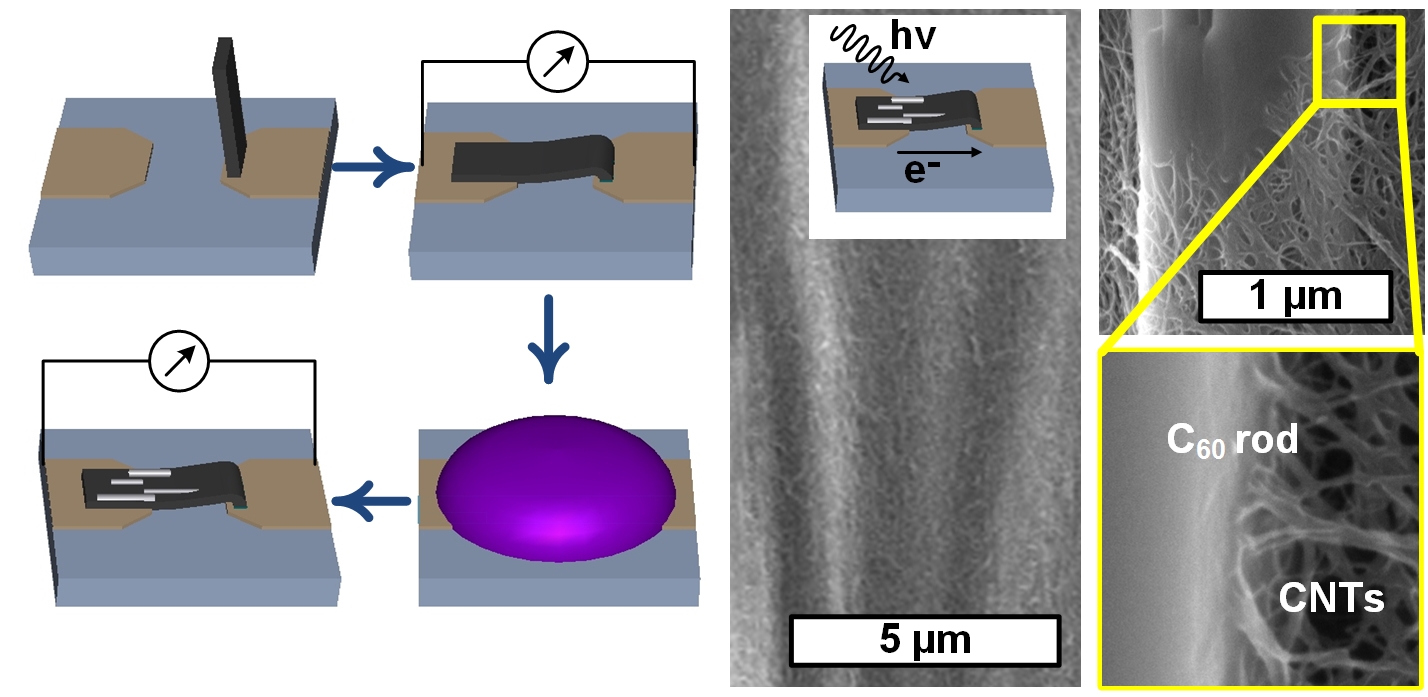
Year
2012Volume
22Issue
3Pages
577–584Abstract
Hybrid nanostructured materials can exhibit different properties than their constituent components, and can enable decoupled engineering of energy conversion and transport functions. Novel means of building hybrid assemblies of crystalline C60 and carbon nanotubes (CNTs) are presented, wherein aligned CNT films direct the crystallization and orientation of C60 rods from solution. In these hybrid films, the C60 rods are oriented parallel to the direction of the CNTs throughout the thickness of the film. High-resolution imaging shows that the crystals incorporate CNTs during growth, yet grazing-incidence X-ray diffraction (GIXD) shows that the crystal structure of the C60 rods is not perturbed by the CNTs. Growth kinetics of the C60 rods are enhanced 8-fold on CNTs compared to bare Si, emphasizing the importance of the aligned, porous morphology of the CNT films as well as the selective surface interactions between C60 and CNTs. Finally, it is shown how hybrid C60–CNT films can be integrated electrically and employed as UV detectors with a high photoconductive gain and a responsivity of 105 A W−1 at low biases (± 0.5 V). The finding that CNTs can induce rapid, directional crystallization of molecules from solution may have broader implications to the science and applications of crystal growth, such as for inorganic nanocrystals, proteins, and synthetic polymers.






